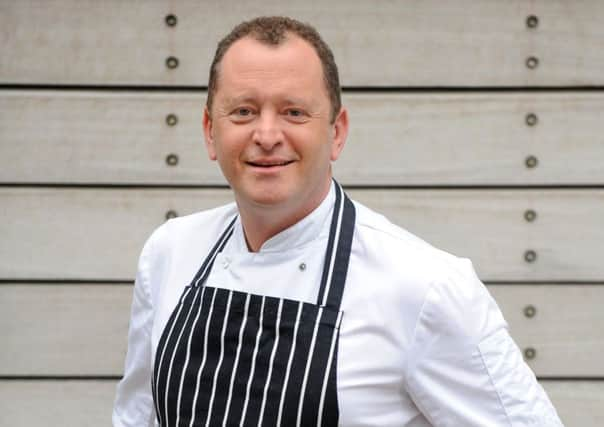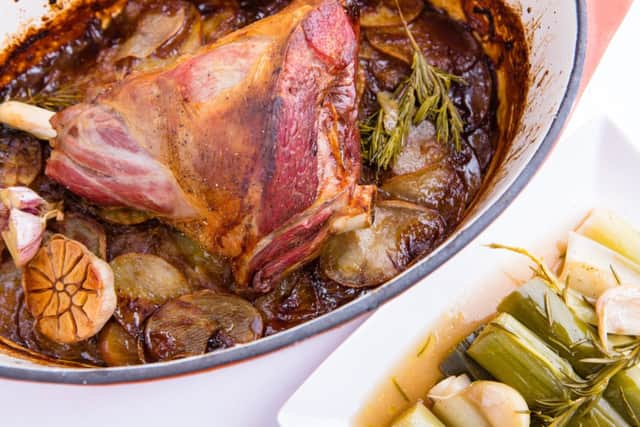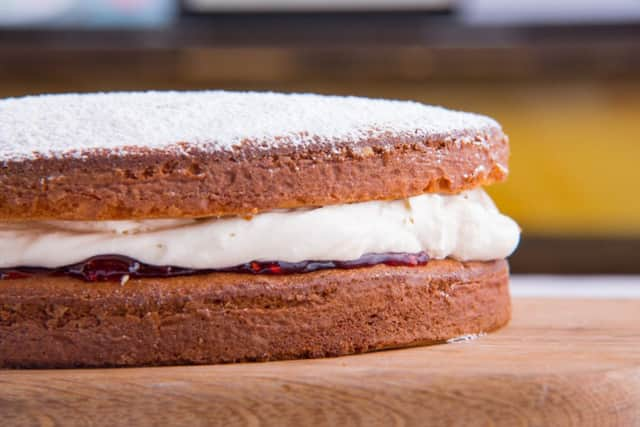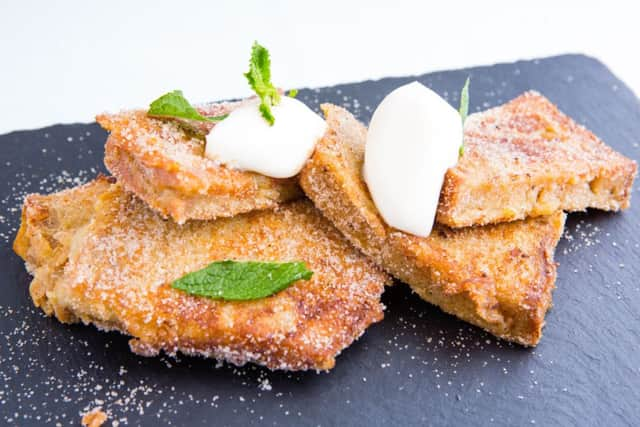Recipes: Roast leg of lamb | Pain Perdu


In spring we not only celebrate Mother Nature stirring back to life, but also all of our mothers on Mother’s Day, which is tomorrow.
This day in the Forbes’ household traditionally begins with a lie in for mum, whether it was for my mum when I was little, or for the current Mrs Chef (as she is fondly known by our kids).
Advertisement
Hide AdAdvertisement
Hide AdIn my childhood, dad would wake us three kids up and lead us to the kitchen where we’d drape a tray with a napkin, fill a small vase with water and drop in a daffodil snipped from the front garden. A pot of tea would be made, a slice of toast would be buttered and topped with lashings of jam. The tray would be carried – with a distinct wobble – up the stairs and served with handmade cards. With kids jumping on the bed and toast crumbs sprinkled everywhere, this tradition continues to this day across the land.


As a chef, I do feel the need to improve slightly on this, so let us treat our mums with a few easy to follow recipes. So go on, spoil her.
PAIN PERDU
This inexpensive and versatile dish is a real classic and a great way of using up stale bread. After you’ve soaked your bread in the egg mix and fried it in butter, it’s great dredged in sugar and cinnamon. Alternatively, make a jam sandwich (as you would normally) then dip in the egg mix and then fry in butter before coating in the sugar and cinnamon. Interestingly, the word perdu means lost or wasted, and it has always been a way of using up old bread. Try a bit of vanilla in with the egg, delicious.
SERVES FOUR


1 Crack your eggs into a bowl and give them a good whisk. Add half the sugar and a wee pinch of cinnamon.
2 Submerge the bread slices (I like to keep the crusts on) in the mix and completely soak the bread for a few minutes.
3 Put a frying pan on the stove on a moderate heat. Add the butter and allow it to froth then swirl it around the surface of the pan. Add the bread, allowing any excess egg mix to drip back into the bowl.
4 Fry on one side for 3 to 4 minutes, then turn over each slice and repeat for a further couple of minutes. It must be golden brown on both sides. Remove the slices from the pan and pat dry on kitchen paper.


5 Place the remaining sugar on a plate with another pinch of cinnamon and mix. Dredge the bread slices in this mix before serving with crème fraîche and some honey and jam. Garnish with mint. Lovely.
ROAST LEG OF LAMB WITH BOULANGèRE POTATOES
Advertisement
Hide AdAdvertisement
Hide AdWhether you’re eating out tomorrow or cooking for your loved ones at home, it has to be a British leg of lamb. I would recommend buying from a farmers’ market or a good local butcher. Ask about the breed, whether it’s organic or even the name of the farm. At the restaurant we use Grierson Organic Perthshire lamb and Richard Briggs Native Shetland Lamb – both different but both delicious. Don’t overcook the leg, simply rub with oil and salt and lay on a trivet of roots with garlic and rosemary before roasting. And make sure you allow it to rest properly. Bring the whole joint to the table to carve, you’ll get lots of oohs and aahs.
SERVES FOUR
1 Heat your oven to 200C/Gas Mark 6. Rub the leg of lamb with half the rapeseed oil and sprinkle with a generous amount of salt and pepper.
2 Place about a third of the onion on a roasting tray with half a bulb of garlic and the rosemary. Place the lamb on top and add a small glass of water (around 100ml) to the tray.
3 Place the tray in the oven and roast for half an hour, then turn down the heat to 150C/Gas Mark 2 and cook for a further 45 minutes to an hour. After about 15 minutes add the leeks, season again and baste with the juices. Cook until the leeks are just soft (about 45 minutes), basting as you cook. Once it’s ready, remove from the oven and let it rest for at least 10 minutes.
4 Whilst the leg is roasting, fry the rest of the onion in the remaining oil for about 20 minutes on a low heat until softened and starting to brown. Season and keep warm.
5 Next, slice the potatoes. You want them to be very thin, so use a mandolin or slicer if you have one. Then start to assemble the boulangère. In a ovenproof dish, layer up the slices of potato and onion, pouring over the stock and seasoning each layer as you go. Add a few dots of butter on top and place in the oven for an hour to an hour and 15 minutes – long enough for the potatoes to soften and soak up all the stock.
6 To serve, place the dish of boulangère potatoes on the table and carve the meat at the table, placing some leeks on each plate as you carve, and top with the cooking juices. A wee tip: if you like garlic, squeeze the cooked, roasted garlic bulb onto the lamb as it is resting, before you carve.
VICTORIA SPONGE
If I am honest, the current Mrs Chef makes the best Victoria sponge I have ever tasted. So, cap in hand, off I went and asked for the recipe. It really couldn’t be easier, it’s almost an all-in-one method that takes just a few minutes to prepare. Just make sure you butter and flour your tins and pre-heat your oven before you start.
MAKES ONE CAKE
Advertisement
Hide AdAdvertisement
Hide Ad1 Pre-heat your oven to 180C/Gas Mark 4, and line two 10in/25cm cake tins with butter and a dusting of flour.
2 Mix the butter, sugar, vanilla seeds, eggs and self-raising flour in a food processor on a slow speed until combined. This will take about 4 to 5 minutes.
3 Then trickle in the milk (about 5 or 6 tablespoons) until you get the desired cake-mix consistency.
4 Divide the mix between the prepared tins and smooth gently with a wet palette knife. Then place the tins on the middle shelf of the oven and bake for around 25 minutes. Don’t over cook – trust your instincts. Test by inserting a cocktail stick in the middle – if it’s still wet when it comes out then it’s not ready.
5 Allow the cooked sponges to cool for 10 to 15 minutes in the tins, then remove and place on a cooling wire until completely cold.
6 To assemble, take one sponge and slosh on the jam, be liberal. Then smear on the whipped double cream. Add the top layer of sponge and dredge with icing sugar. Place on the table and enjoy with mum and a cup of tea. It truly is the best.